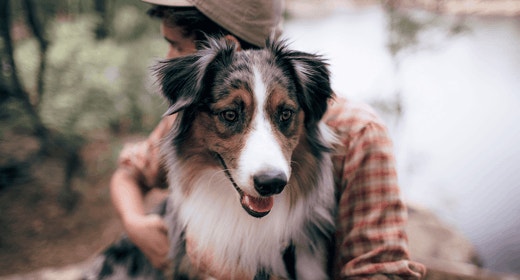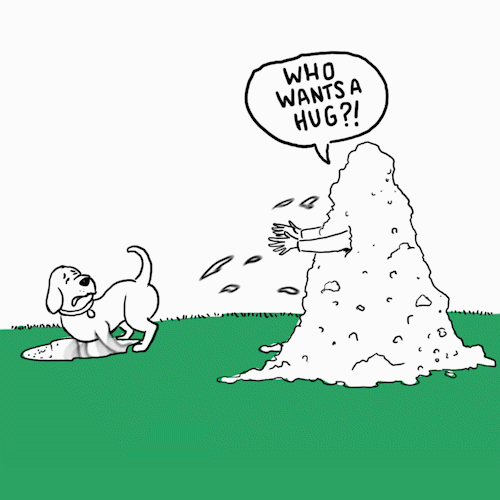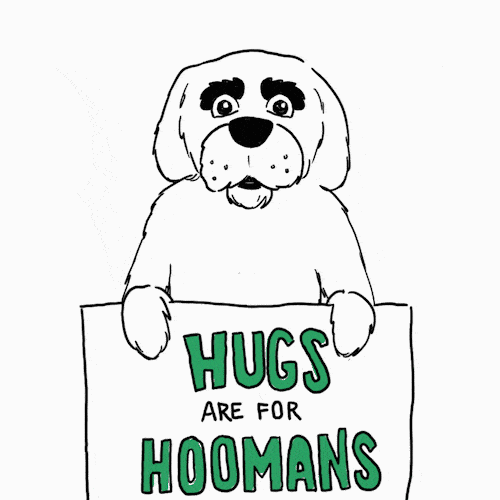

When it comes to dog food, good nutrition is as important to your dog's health as it is to your own. But his nutritional needs are quite different from yours! In general, while a human diet should be high-fiber and low in fat, a dog needs more fat (for energy and a healthy skin and coat) and less fiber (for good intestinal health).
Even if you prefer a vegetarian diet, designing a high-quality dog diet without animal protein is difficult. IAMS™ Company research supports that meatless meals do not provide optimal nutrition for dogs. Dogs are best fed as carnivores because they have simple stomachs and short intestines that are ideal for digesting animal protein and animal fat. Dogs also need carbohydrates for energy.
With thousands of different pet foods available, how do you pick the one that's right for your dog?
Start by identifying the dog's life stage and lifestyle. Puppies, nursing mothers, and mature pets are examples of life stages. And each one has different nutritional requirements. All dog foods must state which life stage they are recommended for.
Nutritional needs also vary depending on lifestyle. A dog whose primary activity is guarding the couch doesn’t need as much energy as one who guards a flock of sheep. Another factor to consider is breed size: small, medium, or large.
Finally, consider any special medical condition your dog might have, such as food allergies, that might require your veterinarian to recommend a special diet.
Once you've determined your dog's life stage and lifestyle needs, you need to decide whether to feed dry or canned food. Most dogs do well eating only dry food. Dry foods, such as IAMS ProActive Health™ Adult MiniChunks, promote oral hygiene for healthy teeth and gums through abrasive chewing action. Some dogs, especially finicky eaters, enjoy wet food because of its smooth, wet texture.
It's important to remember that, while dry food can be left in a bowl all day, wet food should be thrown away after 30 minutes if not consumed. So, dry food is the best choice for busy people who are not normally home during the day.
Once you know your pet’s nutritional needs and your pet's preference, you are ready to go shopping.
Ingredients are listed in descending order according to weight. Because dogs thrive on animal-based diets, it's best to pick a food in which the first ingredient is an animal-based protein source, such as chicken, lamb, fish or egg. Unlike a single vegetable-based protein source, such as soybean meal or corn-gluten meal, these ingredients contain a full complement of essential amino acids.
Scientific studies show that using a combination of carbohydrates in the diet, such as corn meal or barley and grain sorghum, offers optimal carbohydrate digestibility and helps maintain energy levels.
Scientific studies also show that beet pulp, the material remaining after sugar is extracted from sugar beets, is an excellent fiber source and promotes a healthy digestive tract.
For a glossy coat and healthy skin, your pet needs fat in the diet. Good fat sources include chicken fat and fish oil.
Dog-food labels provide limited information about the nutritional value of the food because labeling regulations do not allow manufacturers to describe the quality of ingredients on the package.
A reputable pet food manufacturer will be able to explain to you their specific methods for evaluating and assuring the quality of ingredients used in their products.
When choosing food, the price on the bag, while important, is usually not the best consideration. A low price might indicate inexpensive ingredients, or ingredients that change as market prices fluctuate.
Also, many lower-priced products have higher daily portions to provide the same amount of nutrition found in a high-quality diet. To get a better representation of value, it is the cost per feeding, not the total cost, that counts.
To figure cost per feeding, divide the total cost by the number of days the product lasts. For example, a 20-lb bag of food costs $18.99 and lasts 30 days. The cost to feed is $0.63 per day. A 20-lb bag of food that costs $15.99 and lasts 20 days costs $0.80 per day. So, when costs are analyzed properly, high-quality pet foods compare quite favorably to other brands while offering outstanding nutrition.
Here are some signs of health to look for in your dog:


Most humans recognize a hug as a sign of affection and friendship. In an IAMS™ survey*, 83% of dog parents say their dog likes hugs too. But how do dogs feel about them? Bring it in! We’re going to try and get our arms around this question.

Sure, some dogs enjoy a good canine cuddle, but usually only with their owner or household members. Otherwise, they don’t really care for it. “Hugging is too much and overwhelming for many dogs and should be discouraged if the dog doesn’t know the individual very well,” advises
Opens a new windowJames Serpell, B.S., Ph.D., Professor of Humane Ethics & Animal Welfare at the University of Pennsylvania School of Veterinary Medicine.
There are a number of reasons for this:
Hugging is a human behavior, not a dog behavior. They’re just not physically built for that kind of interaction. We stand upright, so we face people. Dogs are on all fours, so it’s an unnatural act for them. They much prefer a friendly sniff to greet other dogs.
To dogs, a hug is seen as a very dominant form of behavior; it feels like a stranger is trying to assert control over them. It can be quite stressful, especially if done by someone they’re not familiar with.
Since ancient dog days, canines’ first instinctive line of defense has been to run away from danger. Hugging takes this primal option away and can make them feel trapped and confined. Remember when you were a kid getting hugged by that loud great aunt you’ve never met at your dad’s second cousin’s wedding? That’s kind of what your dog is feeling. Who is this? What are they doing? They want to escape too.

You can usually tell by their body language, says
Opens a new windowDr. Jo Gale, BVetMed CertLAS MRCVS, Senior Manager, Global Science Advocacy at Waltham Petcare Science Institute: “Watch for trembling, trying to get away, raised hackles or whites around their eyes. It’s very important to pay attention to this behavior and respect it.”
Don’t worry if your dog doesn’t want to hug it out. There are plenty of healthier ways you can show them you’re still their best friend:
*Surveyed U.S. dog owners, age 18+
Sample Size: n=201
Fielded May 8-10, 2020